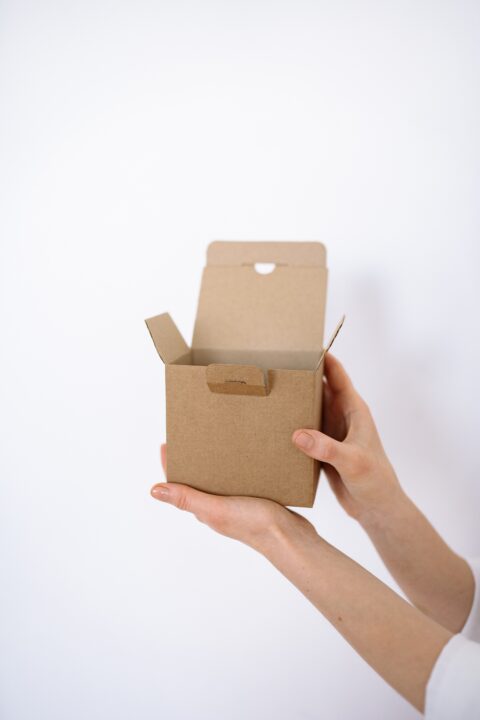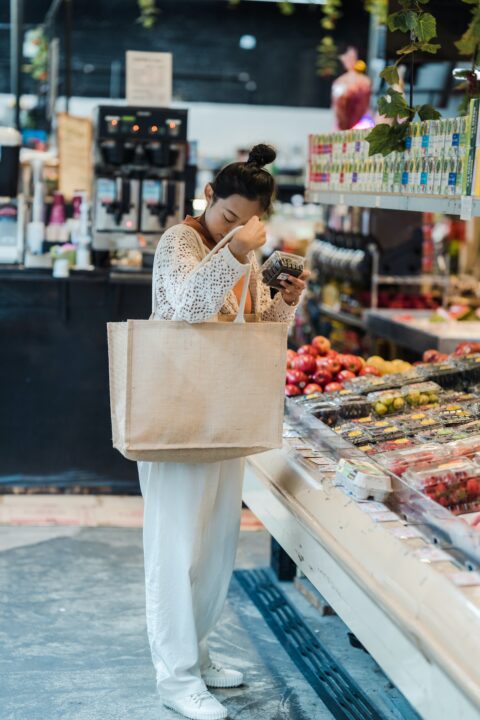The tonnage of annual waste in the United States is becoming a serious concern right now. Waste generated annually is about 300 million tons, which accounts for nearly 12% of global waste. One third of the trash that ends up in landfills is packaging material of different kinds.
Lots of companies keep offering customers lots of single-use packaging, which in turn contributes to waste. Which is why there is a need to reduce waste caused by these packages, which have several adverse effects on our healthy lifestyle.
There seems to be a glimmer of hope and change with campaigns encouraging companies, businesses, and customers to use zero-waste packaging. There are a lot of zero-waste packaging ideas you can practice as a business or consumer; in fact, they are numerous. Some of which will be learned in this article.
What is Zero-Waste Packaging?
Zero-waste or eco-friendly packaging is a way of packaging goods or things that is less harmful to our planet. There are no general measures to describe zero-waste packaging, as it depends on your way of describing it. But in the general standard, they are regarded as those packaging materials that contribute to solid waste and hence pollute the environment.
As a matter of fact, climate change is a serious concern globally today. By using non-zero waste packaging as a producer, business, or consumer, you are in no small measure adding to the current problem.
We all want our goods to be packaged well and fancifully, but the effect this is having is despicable. Well, to burst your bubbles, you can still package your purchase or stuff with fanciful zero-waste materials. Let’s explore some zero-waste packaging ideas for businesses and customers.
10 zero-Waste Packaging Ideas
1. Use compostable materials
Compostable packaging is a zero-waste packaging idea that’s fast becoming popular in America these days; even many popular brands and consumers are keying into it. It is a great idea to reduce plastic waste in the environment. Compostable materials are materials created from renewable sources that do no harm to the environment after disposal.
Some of the popular compostables are often made from plant materials like sugarcane fiber and cornstarch. They are mostly used to produce disposable food takeouts and cutlery. The reason why compostable materials are advised is that they do no harm to the environment after disposal but rather disintegrate and even add nutrients to the soil. This very practice is one of the best ways to thoroughly manage and cut down on plastic waste in our landfills.
2. Reuse Jars and Containers
Reusing jars and containers is one of the easiest ways to reduce waste from packaging materials. You do this by buying home-use products in bulk instead of single-use, then filling them up in containers and jars for storage.
Apart from reducing waste, this idea tends to glam up your kitchen and bathroom. There are plenty of products that you can store up in these containers and jars when you buy in bulk, some of which include home products like soaps, detergent concentrates, dishwashing solutions, salt, seasoning ingredients, etc.
Some stores across the states now have refill stations; once those products are finished, you can order and shop for a refill with those jars and containers. Even many of the companies that produce some of these products now offer refills and reuse. This idea is a practical step to reduce most waste, especially plastic waste, which constitutes a high percentage of waste that ends up in landfills and hence has a negative impact on the planet.
3. Use Biodegradable Packaging Materials
Biodegradable packaging is similar to compostable packaging; the only difference is that it is designed to break down gradually and disappear over time, thus leaving no harmful effect.
These materials are sourced from plants like mushrooms and even seaweed. Biodegradable packaging materials are best for packaging perishable goods or products with a relatively short lifespan. This zero-waste packaging idea can help reduce plastic waste.
4. Buying in bulk
-

greta hoffman, pexels, 94752391.jpg
The benefit of buying things in bulk cannot be overemphasized. First, you save yourself some money and get more than enough value for your money’s worth by buying singly. The second is that you are reducing waste that could have been caused by packaging if you had bought it in pieces or singly from time to time.
When you buy in bulk, your packaging might be bigger but it comes in one box or package. While for single-buying, by the time you’ve bought the same thing up to 10 times, if it’s something that is packaged in plastic, you would have contributed too many plastic wastes to the environment. If bulk buying is encouraged, it can help cut down on waste in no small amount.
5. Practice the use of Japanese Furoshiki Wraps
The Japanese furoshiki wrap is an age-old traditional wrapping cloth used to package gift items, boxes, groceries, and general items. Furoshiki wraps are a very nice alternative to plastic bags and paper packaging, as they can be reused as many times as possible.
All you need is a piece of cloth, which you fold and tie to shape to make a beautiful and firm wrapping of objects. If you are not sure how to use this, you can go over to YouTube and check out some videos on how to package items with the Japanese furoshiki wraps.
Brands can also borrow this traditional Japanese packaging practice to package some of their goods, especially gift items. By using this wrap, you are not only reducing waste in the environment but also promoting traditional culture and adding a touch of elegance and glam to your gift item or shopping outing.
6. Minimize Packaging
As well as going to brands, this zero-waste packaging idea also concerns individuals. What can be noticed is that some brands overpackage their products; you did see some products with multiple layers of packaging. As much as this can be essential for some goods, it also contributes to a very large amount of waste.
Minimalist packaging is being rethought by some brands that really care about reducing waste on the planet, and it is the right step in the right direction. Most production practices by brands contribute largely to carbon imprints; using minimal packaging can at least reduce waste, which can further cause its release.
Focusing on recyclable, compostable, or biodegradable packaging materials should be the focus of most brands. This step will not only reduce waste but also help the environment stay clean.
7. Practice Upcycling
-

micheilecom visual stories, pexels, 9859319.jpg
Upcycling is one of the best zero-waste packaging ideas. It involves giving an item a second life. It simply means reinventing a material that could have been thrown into the trashcan and transforming it into a new packaging material.
Materials such as glass jars, fabric scraps, and cardboard boxes can be upcycled. Instead of throwing them away, glass jars can be used to store DIY beauty products like soaps, detergents, and some kitchen spices. Instead of throwing away cardboard boxes, they can be rearranged, cut, and decorated and used to package gifts.
Some other materials that can be upcycled include old clothes into cleaning rags, soft drink bottles into being used for storing water in the fridge, etc. Upcycling is another form of creativity; in fact, almost everything can be upcycled today, depending on your level of creativity. Through this, millions of tons of waste can be reduced by at least half.
8. Package Foods with Edible Films
Have you ever thought of how amazing it will look shopping for food or fruits you can eat together with the packing? Packaging foods with edible films is one zero-waste packaging idea that makes sense and can help reduce waste to a bearable minimum.
Though not all foods can be packaged with it, a whole lot of foods can be packaged with edible film, including ice creams, cakes, fruits, doughs, pies, eggs, and biscuits. Ice cream and cake are very popular and have been invoked for many years now.
Edible films are made from edible plant sources, most notably corn starches and other edible starches. If food suppliers and manufacturers can fully implement this in many of their packages, the waste constituted by food and fruit packages can be cut by half.
Consumers can also make DIY edible film and use it to package food and ice cream for kids birthdays or in school lunch packs. If we must achieve at least 50%, there is a need for everyone but consumers and producers of some foods to put this into practice.
Not only will this minimize waste but it’s like adding additional nutrients to food, whereas plastic bags and packaging are completely the opposite. They can be dangerous if they start to leach into the food they are packaged with, and that’s very risky for your wellbeing.
9. Multi-Purpose Packaging
Overpackaging is a big challenge that achieving zero waste packaging poses; we tend to overdo it sometimes. Some products come with too many layers of packaging, and sometimes people even ask for extra.
Coming out of a mall with different shopping bags is no flex, actually. Rather, you are contributing extensively to waste and indirectly polluting the environment, whether you dispose of them correctly or not. The best thing to do is to package all you are buying in a single package instead of packaging each separately.
Many reasons exist why bulk buying is important. Anytime you are ordering anything online or in a physical store, just include in your order that you want it all to come in a single package. By doing so, you are indirectly contributing some quota to the waste reduction campaign in a direct manner.
10. Digital packaging
The world is fast becoming a global village. In time, the internet may take over many of the physical things we do. We may argue that it will do a disservice to people, but luckily, it will help reduce and control global waste. Here are some digital zero-waste packaging ideas.
Instead of putting books in hard copy, create ebooks and docx, and newspaper companies can create online news websites and cut down on physical distribution. Digital music using streaming platforms instead of cassettes, disks, etc. These ideas are basically for people in the publishing, entertainment, software, and distribution lines.
Bottom Line
In order for us to achieve our set goal of achieving zero waste packaging, there is a need for everyone to rethink what we consume and choose eco-friendliness. A high percentage of waste contributing to pollution comes from homes and offices and is packaged. With these and many other zero-waste packaging ideas, we can attain a reasonable level of waste reduction. Remember that sustainability is everyone’s business.
Go for compostable materials, reuse jars and containers, use biodegradable packaging, try the traditional Japanese furoshiki wraps, try to minimize packaging, be creative and do upcycling, use edible packaging for some foods, practice multi-packaging all the time you shop, and go digital. For a greener and better planet, do your part!






